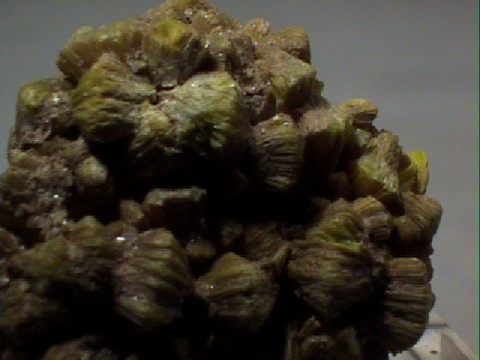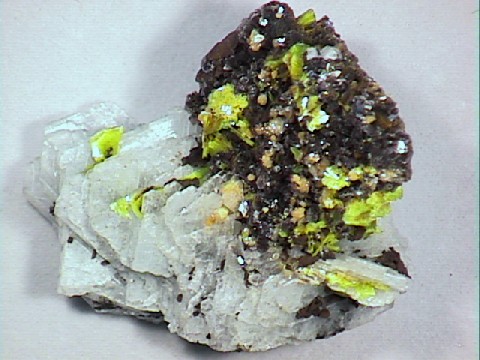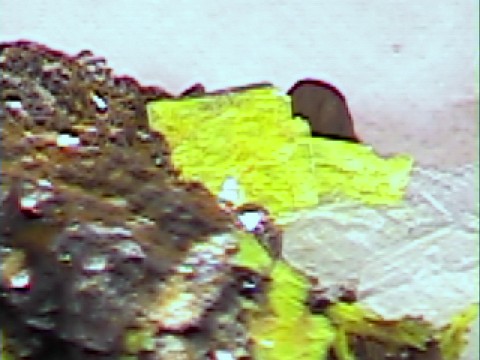 The Mineral META-AUTUNITE
The Mineral META-AUTUNITE
- Chemistry: Ca(UO2)2(PO4)2 - 2-6H2O, Hydrated Calcium Uranyl Phosphate
- Class: Phosphates
- Group: Meta-autunite
- Uses: A minor ore of uranium and as mineral specimens.
Specimens
In this case, the conversion is not so dramatic since it involves only the loss of a few water molecules; therefore, a good pseudomorph is likely. The conversion from autunite to meta-autunite is reversible with addition of water, unlike most other examples from the Meta-autunite Group. In a way, meta-autunite and autunite are similar to zeolites in their hydration/dehydration capabilities. Meta-autunite can be found in nature, possibly formed without going through the autunite phase. Meta-autunite is the more stable form of the two and most specimens of autunite are probably meta-autunite, if the truth be told.
The structure of meta-autunite is composed of phosphate tetrahedrons linked to uranium-oxygen groups that form distorted octahedrons. The phosphate and uranium groups form sheets that are weakly held together by water molecules. This structure produces the tabular habit, the one perfect direction of cleavage, and the relative softness. It is an analogous structure to that of the phyllosilicates.
Meta-autunite is a highly
PHYSICAL CHARACTERISTICS:
- Colors include lemon-yellow, greenish yellow to canary yellow (sometimes with a black core, possibly due to uraninite).
- Luster is vitreous or pearly to dull.
- Transparency: Crystals are translucent to opaque.
- Crystal System is tetragonal; 4/m 2/m 2/m.
- Crystal Habits include tabular square crystals dominated by two pinacoid faces. Crystals can look cubic (pseudocubic) too. Also as crusts, micaceous, foliated and earthy. Many crystals are pseudomorphs of autunite.
- Cleavage is perfect in one direction.
- Fracture is uneven.
- Hardness is 2 - 2.5
- Specific Gravity is approximately 3.5 - 3.6 (above average for translucent minerals and higher than autunite {3.1- 3.2} due to loss of water molecules).
- Streak is a pale yellow.
- Other Characteristics: Brightly
fluorescent green to yellow-green, radioactive and cleavage sheets are surprisingly brittle. - Associated Minerals include limonite, quartz, pyrite, meta-uranocircite, uranophane, meta-torbernite, autunite, torbernite, uranocircite, uraninite and other uranium minerals.
- Notable Occurrences include the Dripping Springs Quartzite in
Gila County , Arizona; the Daybreak Mine, Washington
and the Miracle Mine and other localities in Kern County,
California, USA; St. Austell and Redruth,
Cornwall, England;Saxony , Germany and Rum Jungle, Australia. - Best Field Indicators are color, crystal habit, higher density than autunite, fluorescence, radioactivity, associations and cleavage.






